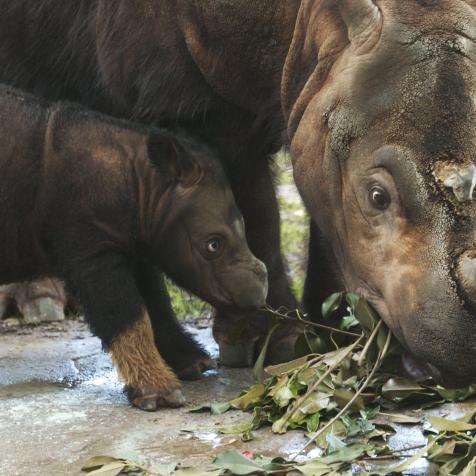
Khatawut Chaemchamras / EyeEm
Bats Pushed to Extinction, Here’s How to Help
As households in the country ramp up to prepare for Halloween, decorative bats are everywhere – streaming from porches and embellishing spooky front yards. But what about real bats? Our favorite Halloween critter is actually under severe threat.
Bats have been on this Earth for more than 50 million years. With more than 1,400 species, they are found across six continents (everywhere but Antarctica).
They play a vital role in the health of the ecosystem, due to their voracious appetite for the kinds of insects that we consider pests, their plant pollination habits, and seed dispersal.
They’re in unprecedented danger though, due to widespread habitat destruction and accelerate climate change, which has had a knock-on impact on the increase in invasive species and their food sources.

Rapeepong Puttakumwong
Lyle's flying fox male bat sleeping on a tree.
These fascinating animals, which are the only mammals capable of true flight, have seen a decline in their populations worldwide, and characteristics that are endemic to their species, such as slow gestation periods, have only worsened their plight. On average, most bat species only give birth to one pup a year, making them one of the slowest reproducing mammals on earth for their size.
There are now 21 bat species that face imminent risk of extinction (and categorized as “critically endangered”), a further 83 classed as endangered, and another 109 considered vulnerable.
In addition to climate change and destruction of their habitats, bats are hunted for sport and their meat and are often killed due to harmful myths about them being vampires (in reality only three bat species feed on blood). They’re also at risk from wind turbines, and scientists estimate hundreds of thousands are killed by turbines every year in the US alone.

annick vanderschelden photography
Fruit bat in Africa.
So, how can we help?
As bats rely on insects to live, eating up to 3,000 of them in a single night, minimizing the use of pesticides can help bats find enough food. Bats prefer dead and dying trees for their roosting sites, so as long as they don’t create a hazard, leave these around where possible. In addition, you can erect a bat house in your backyard.
If you’re DIY-handy, you can build your own bat house, and download a free design from Bat Conservation International, from a fancy four-chamber mansion to a smaller, but still luxurious rocket box. You can also keep it simple and buy one, but be aware that they need certain criteria. Bat houses need to be made with roughened wood and absolutely no fabric or mesh. They also have to be at least 24” high and 16” wide, and you can find installation tips such as where to put the bat house, and how high, on Bat Conservation International’s website. Not only will you be helping bat populations, but you’ll also be kept entertained by their nightly acrobatics, which makes fascinating viewing.

Bruno Guerreiro
Flying fox bats in Riung, Flores, Indonesia.
If you have a cat, keep them inside at night, especially during the summer months when bats are feeding their young--cats and bats do not mix. And, if one flies into your home, check out these safe removal methods.
Finally, get the whole family involved in conservation and become citizen scientists. Many states have bat projects that need the public’s help to contribute information, everything from acoustic bat monitoring, to summer bat roost counts. Check out your state’s natural resource agency to find out what's available.
And remember, bats are for life, not just Halloween!


















